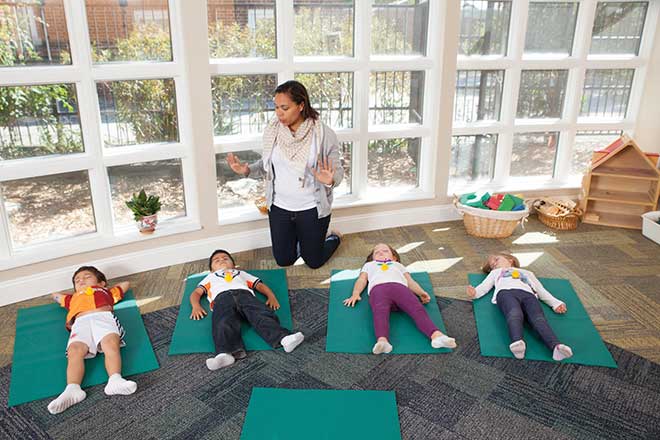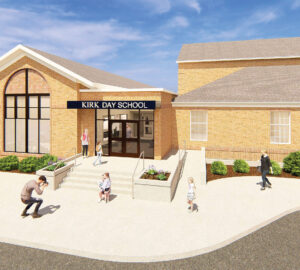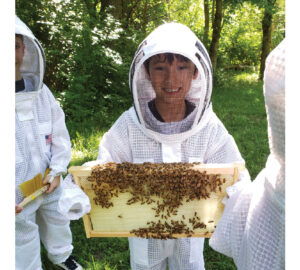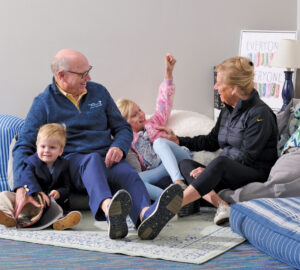At Forsyth School, the spaces where the children learn are as much a part of the unique educational experience as the subjects taught. No effort has been spared to turn the school’s six historic houses into a loving home perfect for learning, exploring and growing, says admissions director DeAnn Pomatto.
 Founded in 1961, Forsyth School is an independent day school that serves students age 3 through sixth grade. This year marks the 50th anniversary of the purchase of the school’s first home, the Fillmore Early Childhood Center. It houses pre-kindergarten, junior-kindergarten and the Lower School Science Center. The structure recently underwent a massive renovation, which expanded the science center to take up the entire third floor. “We offer science instruction starting with age 3, and the changes to Fillmore House more than doubled the Lower School science labs and also give our teachers increased flexibility in their teaching,” Pomatto says. In addition, the added space and flexibility will allow Forsyth to offer a part-time pre-kindergarten option for the first time, starting in 2016.
Founded in 1961, Forsyth School is an independent day school that serves students age 3 through sixth grade. This year marks the 50th anniversary of the purchase of the school’s first home, the Fillmore Early Childhood Center. It houses pre-kindergarten, junior-kindergarten and the Lower School Science Center. The structure recently underwent a massive renovation, which expanded the science center to take up the entire third floor. “We offer science instruction starting with age 3, and the changes to Fillmore House more than doubled the Lower School science labs and also give our teachers increased flexibility in their teaching,” Pomatto says. In addition, the added space and flexibility will allow Forsyth to offer a part-time pre-kindergarten option for the first time, starting in 2016.
As a way to maximize the home’s space, the renovation included reversing the staircase to expand classroom space. That enabled a new entrance for junior-kindergarten and gave pre-kindergarten its own dedicated entrance, Pomatto says. Fillmore House also includes a designated area for early childhood Spanish instruction, a full working kitchen and space for yoga, music and movement.
The Fillmore Early Childhood Center’s renovation unveiling celebration, held at the beginning of the school year, marked the successful completion of the ‘Expanding Our Opportunities’ capital campaign. This fundraising effort kicked off in 2013 and raised more than $4 million, making it the largest in the school’s history. The campaign allowed the campus to expand by one acre and 6,500 square feet of classroom space, an increase of 30 percent. Among other improvements, Forsyth also was able to renovate Last House, purchased in 1996, and to add and renovate a new property, Next House, the school’s sixth. Now, grades three through six each have their own home.
The campaign also raised funds for the purchase of a half-acre lot, now home to a bird corridor and native Missouri garden. “A lot of learning takes place outside,” Pomatto says. Forsyth students, for example, have used the garden to study the native habitat’s impact on bird and insect populations. The school’s outside space also includes a large milkweed garden, vital for the survival of the monarch butterfly.
Although the school continually seeks to improve its learning spaces, Forsyth also is careful to preserve the historic character of its stately properties. All six homes, built in the 1920s, are on the National Register of Historic Places. “We didn’t want to knock down these old houses and build a traditional school,” Pomatto says. “We love our unique spaces, and it feels like home to our children. And when children feel comfortable and they’re in a nurturing, familiar place, so much learning occurs naturally. Our teachers are always looking for ways to use our space or do things differently. These new spaces made available by our capital campaign have opened up even more possibilities.”
[Forsyth School, headquartered at 6235 Wydown Blvd., is an independent day school serving students age 3 through sixth grade. It is accredited by the Independent Schools Association of the Central States and is a member of Independent Schools of St. Louis. The school recently renovated its Fillmore Early Childhood Center, marking the successful completion of a $4.1 million capital campaign. For more information, call DeAnn Pomatto at 314.726.4542 or visit forsythonline.com.]
Pictured: Forsyth preschoolers practice yoga with teacher Julia Wilkins.
Photos: Michael DeFilippo Photography
Cover design by Jon Fogel








